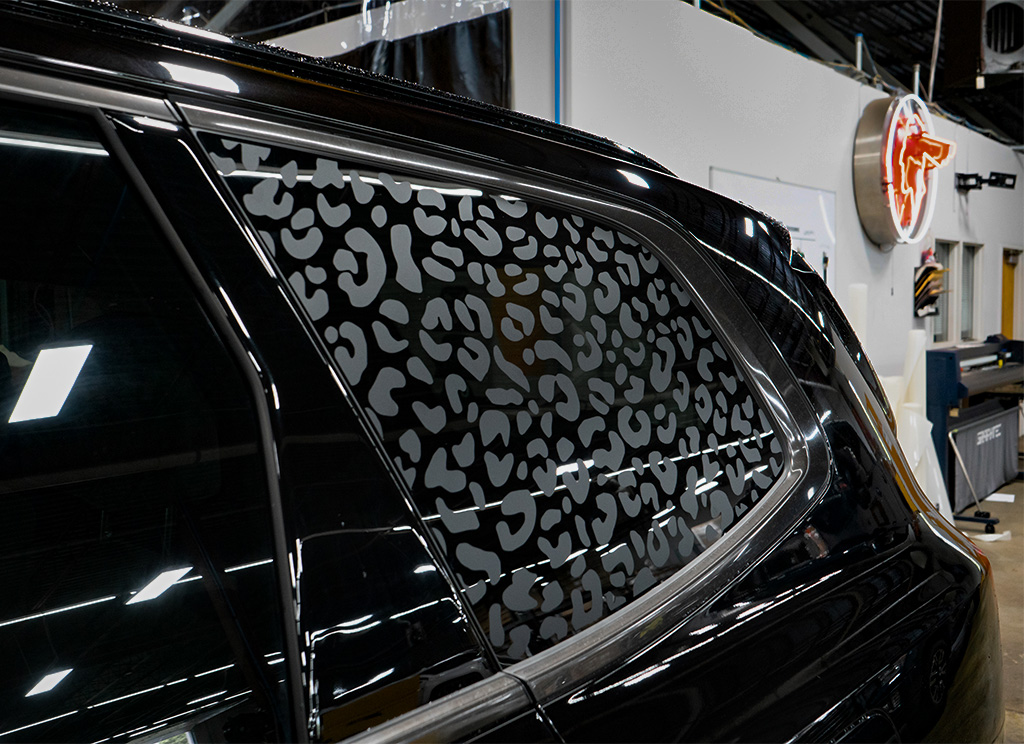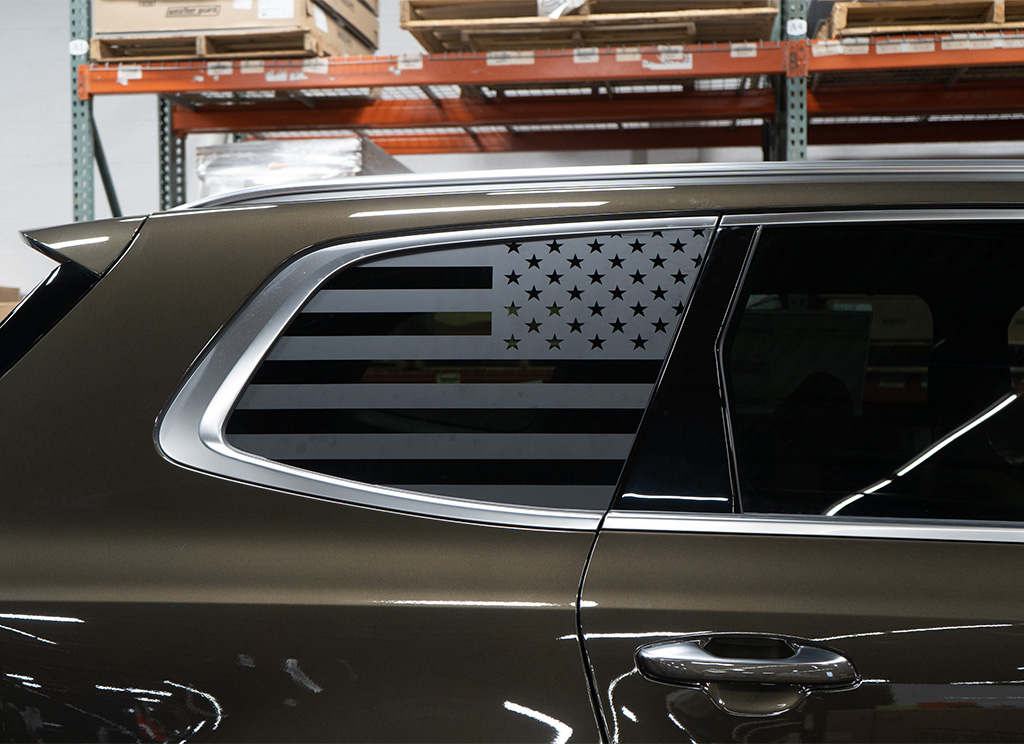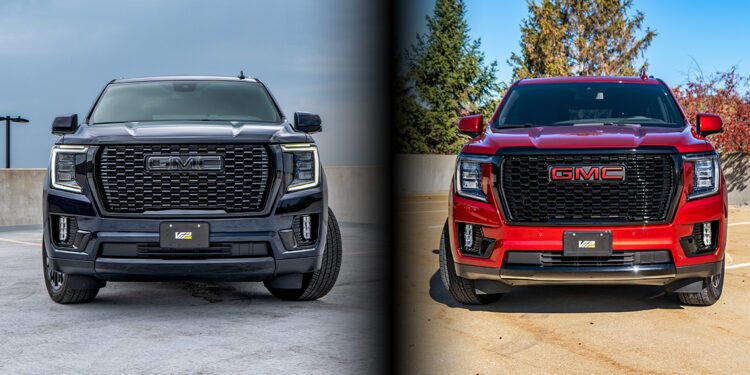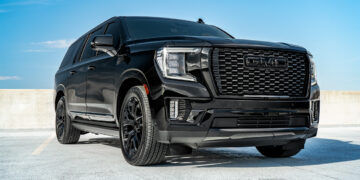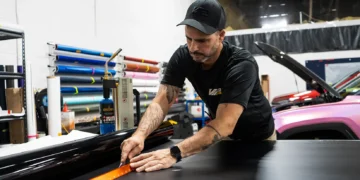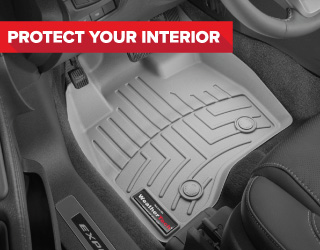The safety and legality of your vehicle’s windows is incredibly important. Which is why many people wonder about the use of window tint films, graphic decals, and aftermarket windshields. In this article we will provide you with some important information on your options when it comes to these features.
Window Graphics
If you are looking to customize your car then you’ve no doubt seen all kinds of graphic decals available. Whenever you got to add them to your car you should be mindful of your local laws since it is illegal to place graphic decals in certain areas of your car.
Restrictions on size and location of decals differ from state to state, but can be found with a quick google search. It’s also best to use an automotive OEM grade vinyl because the adhesive will hold safely in place without causing damage when taken off.
Areas To Place Graphics
- Quarter glass panels behind the rear windows
- Corners of the 2nd row side windows and rear windshield
- Windshield decals can only be on the top 5-inches and aren’t allowed in some states
Why Are There Laws For Car Stickers And Decals?
These laws are intended to protect the drivers line of sight while on the road. This in turn protects pedestrians and other drivers so they do make sense. They aren’t intended to be buzzkills and if you stick to safe spots and smaller stickers you should be in the clear.
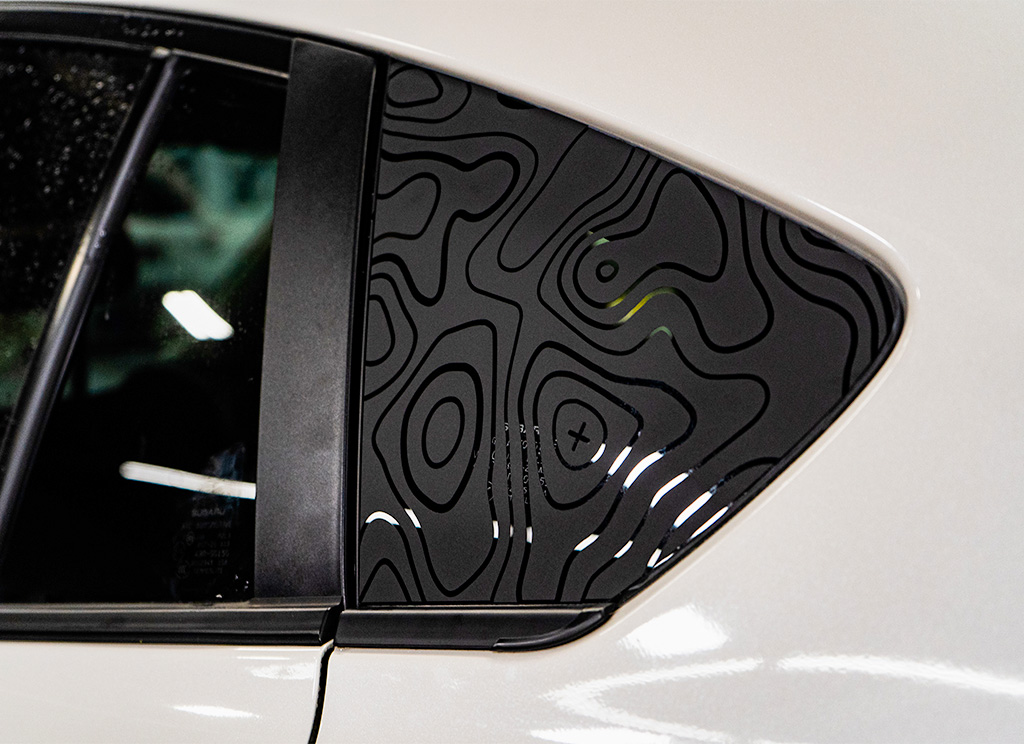
What About Commercial Vehicle Window Wraps?
Some commercial vehicles will have vinyl wraps that cover the rear windows. This is because commercial vehicles have less strict laws for promotional purposes. If you want to cover any windows during a commercial vehicle wrap then there are a few more options to keep visibility. Certain wraps are made with a translucent see-through film while others features a dotted design that doesn’t fully obstruct the window.
Automotive Window Tinting
You may be wondering if window tinting is even legal. The answer is that it’s allowed in certain states and at specific levels of VLT, so check your local laws. Many vehicles actually come with factory tints on the rear windshield and back passenger windows. Factory tinted glass uses dye and pigments mixed into the glass as apposed to films which are used for aftermarket tinting. Most reputable shops will either warn you if you select a tint film that is too dark or simply not provide the service.
It is permissible with certain medical prescriptions, for things such as sensitive skin, to have a darker tint than your state laws allow. Even still some technicians will not install a tint that is darker than allowed by the law.
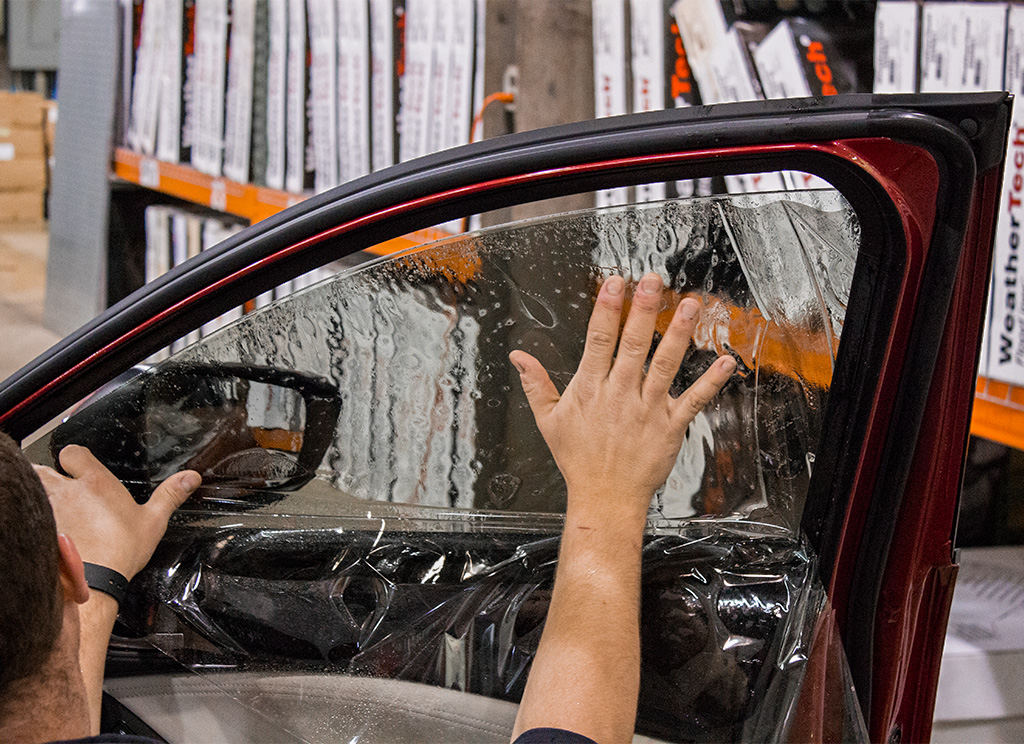
Window tint is measured by VLT (Visual Light Transference) which tracks the amount of light that comes through the film. The lower the % of VLT the darker the windows will be.
Why Are Window Tints Popular?
Window tinting is largely popular because the darker windows can aid the look of the car. Having darker windows also provides a bit more privacy especially for 2nd row seating.
What not everyone knows, but is a great reason to get window tints, is that they block heat and UV rays to create more comfort and safety. The tint film blocks sunny rays that can interfere with a driver’s vision as well. Lastly, having a tint film on your window can reduce the spread of glass in the event of an accident.
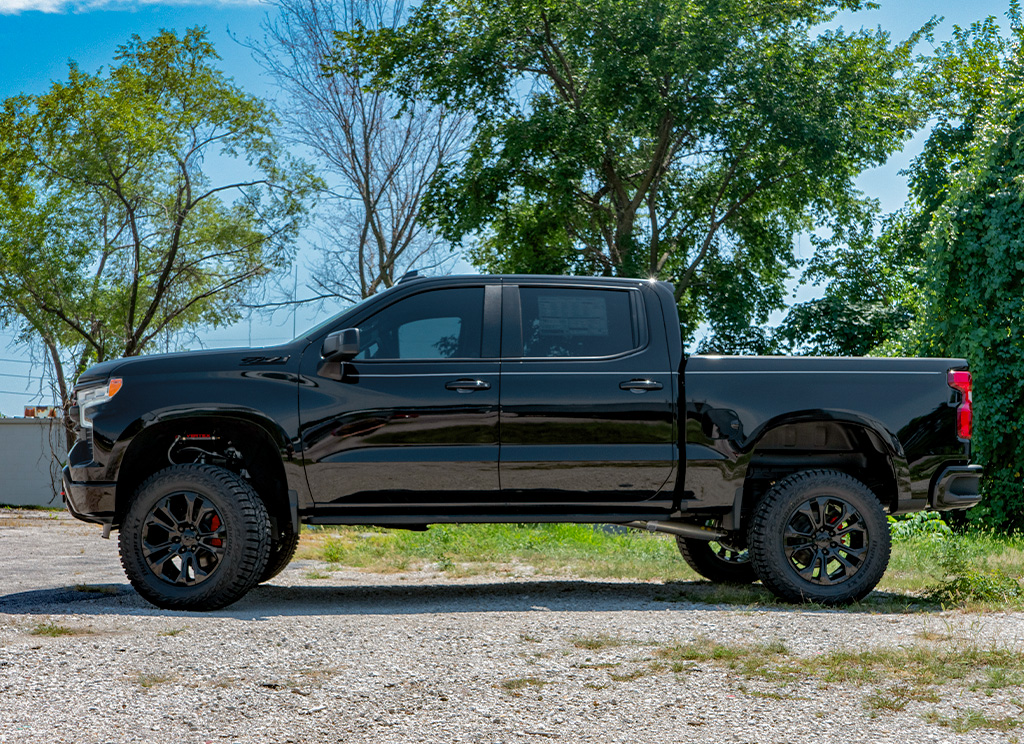
Why Are There Window Tinting Laws?
Most states have restrictions to the front windows that require them to be around 30-35% VLT or more. States require this because law enforcement officers and first responders need to be able to see the driver in the cases accidents or identifying a person of interest in a criminal investigation. The back windows are often allowed to be darker for privacy and protection from the sun.
Otherwise tinting is restricted simply because it can make the windows too dark at low VLT levels lowering visibility during night time driving. When drivers can’t see they become a danger to pedestrians, themselves, their passengers, and other drivers.

Applying a window tint film on a windshield is illegal, with one exception of using an eyebrow tint at the top 5-inches or the AS1 line of the windshield. Eyebrow tints reduce the suns glare on the drivers eyes and can help them see more clearly.
Aftermarket Windshield Glass
Today many windshields do more than just protect from whipping winds or flying objects while on the road. Now they come with loads of built-in electric safety sensors and cameras providing more security to your vehicle. Because of the importance of your windows there is debate about whether or not aftermarket glass and reliable.
If you are like most people, you rarely think of your vehicle’s windshield until you get into an accident and realize how important the glass truly is. Aside from providing clear visibility, your car’s windshield also contributes to the structural integrity of your vehicle and plays a key role in safe airbag deployment.
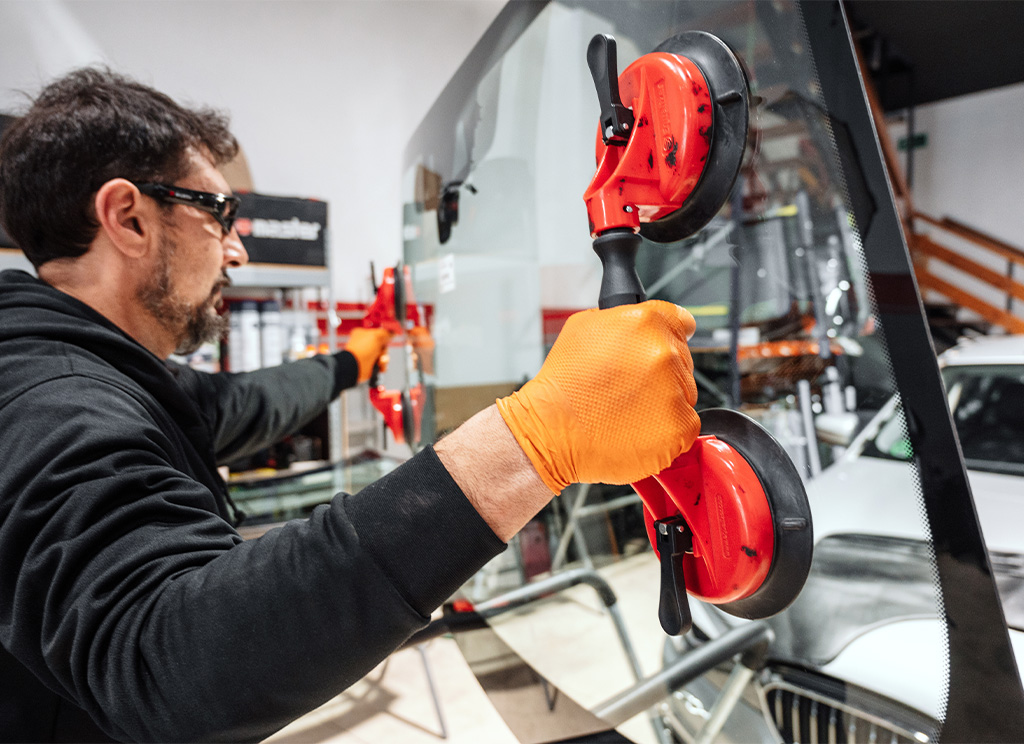
Since windshields can help ensure your safety on the road, it is ideal that you look after them accordingly. If you need auto glass repair and replacement, you must ensure it’s done promptly and properly. When it comes to replacement windshield glass, you have two options available.
Your two options are OEM (original equipment manufacturer) and aftermarket windshields. OEM is considered the ideal replacement as it is similar to the car’s original windshield. Aftermarket glass, also known as original equipment (OEE), is reverse-engineered auto glass. Check the infographic below to know more.
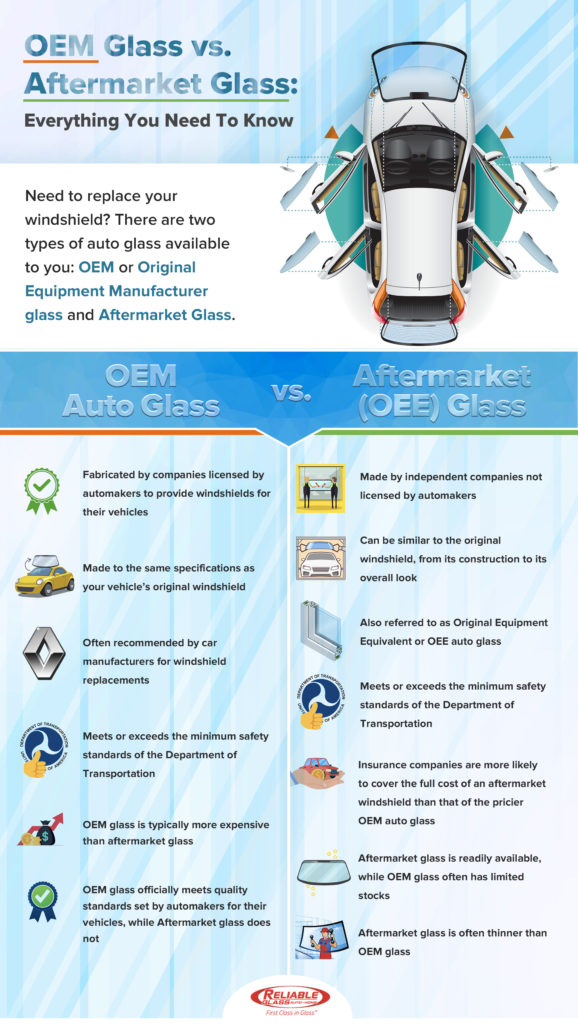
While OEE glass can fit any vehicle, there are likely a few differences in the quality and design of the final product. Still each glass meets or exceeds the minimum safety requirements for the DoT(Department of Transportation).
Some manufacturers like Honda, Mercedes, Subaru, and Nissan have specifically stated that OEM glass is advised for their vehicles. This is largely due to electrical components and sensors to ensure the cars continues to work as intended.
Choose What’s Best For You
Now you have some more info on these aftermarket modifications. No matter what choice you make it will be right for you and your car. Just be cautious of tint that is too dark, decals that impair visibility, and glass that isn’t compatible with your vehicle. Keep a look out for other helpful automotive content!
Looking to customize your car, truck, or SUV? We offer aftermarket accessories internationally and services across the contiguous U.S. to help you get your car exactly how you want it. Reach out if you’d like a quote for your vehicle!


